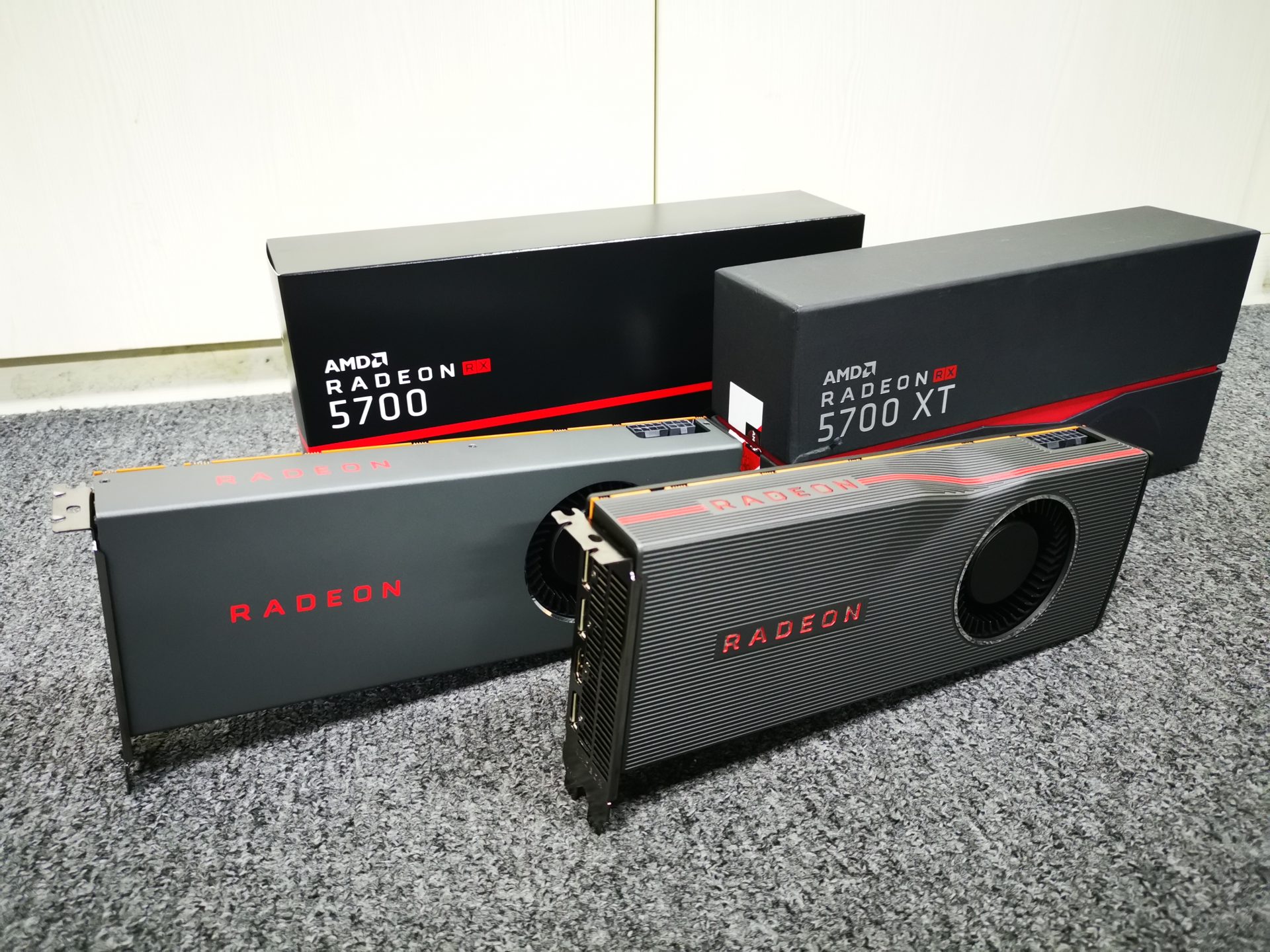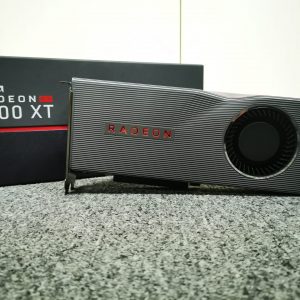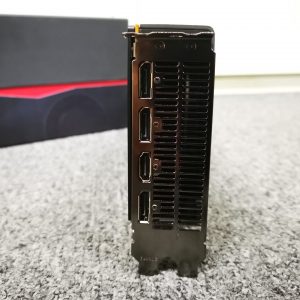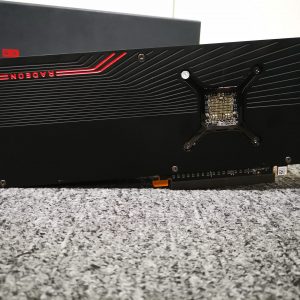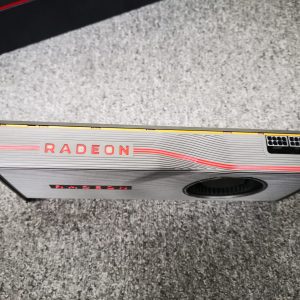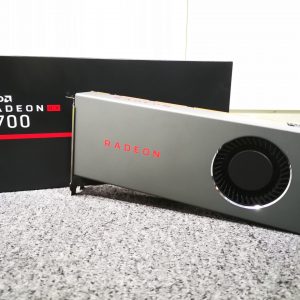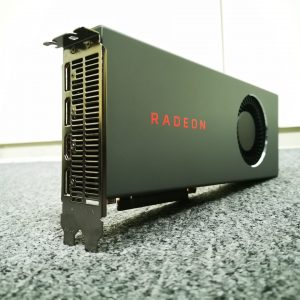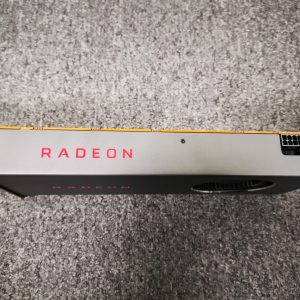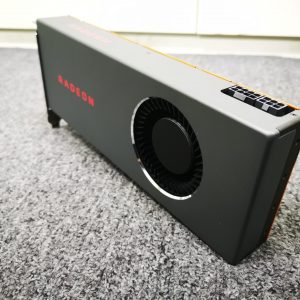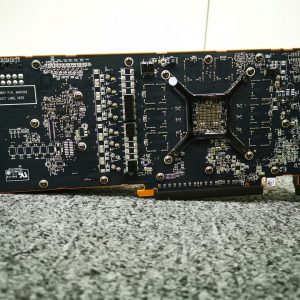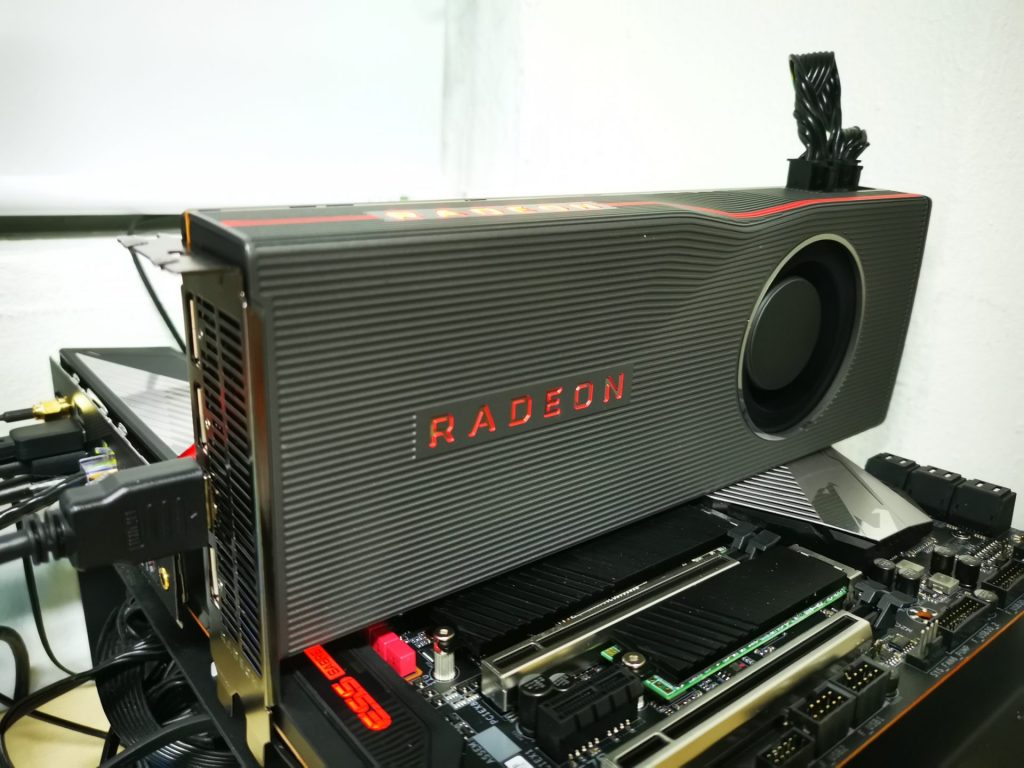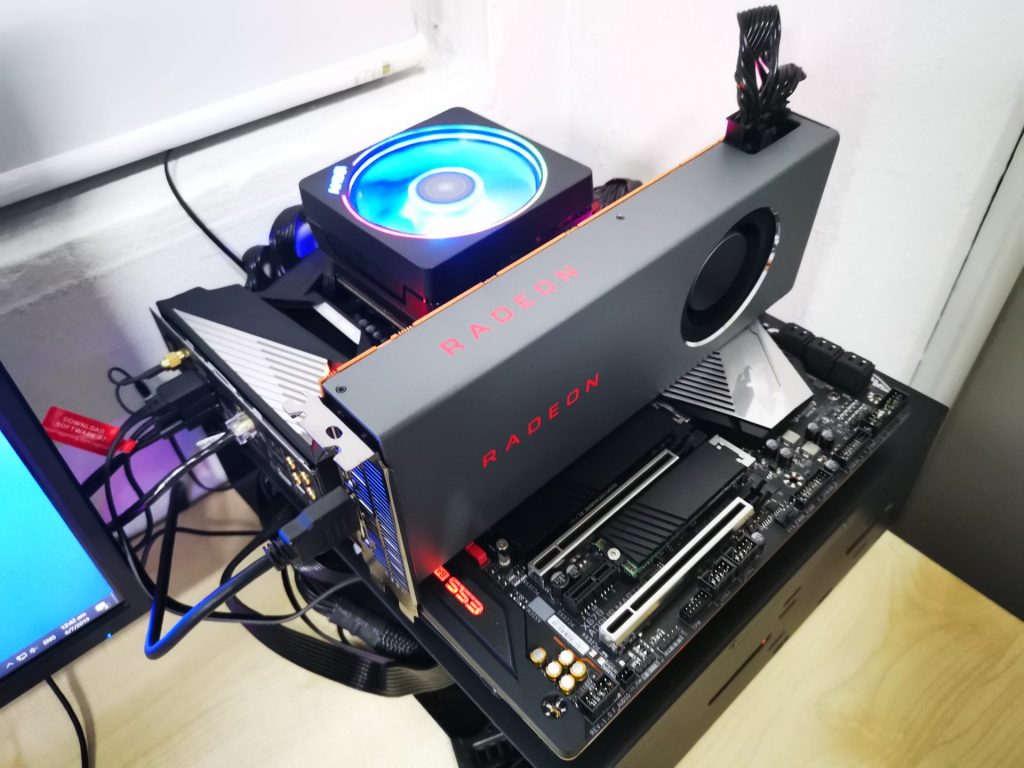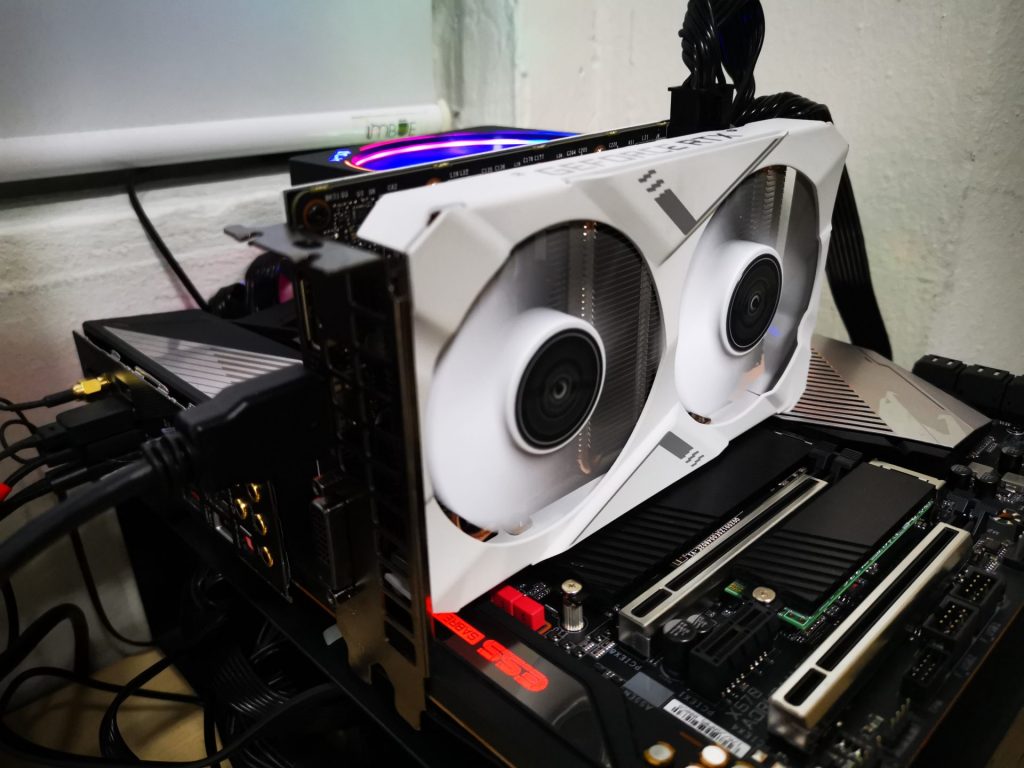With the announcement of the new 3rd Generation Ryzen processors at COMPUTEX 2019, AMD also surprised the media with the new Radeon RX 5700 series graphics card. Built on the new Radeon DNA (RDNA) architecture, the RX 5700 series has been developed with gamers in mind. In the first of its iteration, the Radeon RX 5700 series is equipped with the new “Navi” GPU. These must be the anticipated GPUs that is built on the new 7nm process technology, and is said to change the game for AMD. How well can these two new cards perform when put up against the cards in the green camp? Let’s find out together.
Introduction
AMD iterated that the RDNA architecture was engineered from the ground up. It is developed with superior performance and power efficiency in mind. The Radeon RX 5700 series have the privilege to be the first of many RDNA based graphics card. Moreover, these cards are also equipped with the new PCIe 4.0 interface which provides two times the bandwidth as compared to PCIe 3.0.
We have both the Radeon RX 5700 XT and RX 5700 reference cards from AMD for our tests today. Major AIB partners (ASUS, Gigabyte and MSI) will release these exact reference cards soon, while custom designs with better cooling capabilities and specifications will be released in the near future.
| Graphics Processor | AMD Radeon RX 5700 XT | AMD Radeon RX 5700 |
| Core Clock (Base/Game/Boost) | 1605/1755/1905MHz | 1465/1625/1725MHz |
| Compute Units | 40 | 36 |
| Memory Clock | 14000MHz | 14000MHz |
| Memory | 8GB GDDR6 | 8GB GDDR6 |
| Memory Bus | 256 bit | 256 bit |
| Memory Bandwidth | 448 GB/s | 448 GB/s |
| Card Bus | PCI-E 4.0 x16 | PCI-E 4.0 x16 |
| I/O | 3 x Display Port 1.4 1 x HDMI 2.0b Port |
3 x Display Port 1.4 1 x HDMI 2.0b Port |
Radeon RX 5700 XT
First up, we have the Radeon RX 5700 XT, which is the top of the line Navi-based graphics card at the moment. This card requires a single 6-pin and 8-pin power connector to power it. It uses a blower style cooler design that takes in air from the rear through the front of the card (where the ports are).
We’re not particularly a big fan of blower styled graphics cooler solutions as they are not as effective as other solutions, and are typically noisier. However, as this is a reference card, it should not matter as much. AIB partners will innovate and design their own versions of the card that performs better and cooler.
The card comes with a interesting looking shroud that has a sort of “dented” design next to its blower fan. It adds a certain degree of uniqueness to the card’s aesthetics. Don’t mistake it to be a faulty dent when you remove it out from the box!
The card also comes with a metallic back plate that helps the card with both heat dissipation and support. Moreover, like most reference designs, the card is created with 3 x Display ports and 1 x HDMI ports.
Radeon RX 5700
Similar to the Radeon RX 5700 XT, the Radeon RX 5700 also uses a blower style design. It has a much more minimal and simple design that could be attractive to many. This card also requires a 8-pin and 6-pin plug to power it, even though it is equipped with lesser compute units and is clocked at a lower speed.
Unlike the RX 5700 XT, the Radeon RX 5700 does not have a back plate.
Testing Methodologies and Setup
Since the RDNA is developed with a “gamers first” strategy, it would only make sense to have this review to focus on games. We will compare both the Radeon RX 5700 XT and Radeon RX 5700 with the RTX 2070 from NVIDIA, to better understand where these new card stands with respect to competition.
| Specs | Main System |
| CPU | AMD Ryzen 9 3900X |
| RAM | G.Skill Trident Royal 3600MHz, 2 x 8GB DDR4 Kit |
| Main Storage | Transcend PCIe SSD 110 512GB (OS) |
| GPU | AMD Radeon RX 5700 XT (Reference) AMD Radeon RX 5700 (Reference) GALAX GeForce RTX 2070 White (1-click OC) |
| Motherboard | Gigabyte X570 AORUS MASTER |
| CPU Cooler | AMD Wraith Spire RGB Cooler |
| OS | Windows 10 Pro 64 bit |
| Drivers | AMD Radeon 19.7.1 NVIDIA 430.86 |
The games and their respective settings which we will be testing the cards with are stated below.
| Game | Resolution | Settings |
| World of Tanks Encore | 1080p, 1440p | Ultra Settings |
| Final Fantasy XV | 1080p, 1440p | High Settings |
| Middle Earth Shadow of War | 1080p, 1440p | High Settings |
| Shadow of the Tomb Raider | 1080p, 1440p | High Settings |
| F1 2018 (Australia) | 1080p, 1440p | High Settings |
| DOTA 2 | 1080p, 1440p | As per Benchmark Guide |
| Assassins Creed Odyssey | 1080p, 1440p | High Settings |
| Tom Clancy Division 2 | 1080p, 1440p | High Settings |
| Total War: Warhammer 2 | 1080p, 1440p | High Settings |
| Deus Ex: Mankind Divided | 1080p, 1440p | High Settings |
| Far Cry New Dawn | 1080p, 1440p | High Settings |
As we do expect that more custom designs will be rolled out to the market rather than reference designs, it is not part of our objective to overclock these cards. We will compare the performance of these cards based on the default settings right out of the box. However, do take note that the RTX 2070 which we have tested already comes overclocked right out of the box. We will stick to that as well. Core specifications of that card can be found here.
Benchmark Results
In the 3D Mark Time Spy test, we can see that the RTX 2070 still performs slightly better than the RX 5700 XT. It seems that the RX 2700 XT is still not as optimized on DirectX 12 as the RTX 2070.
On the other hand, for the 3DMark Fire Strike test which is based on DirectX 11, the Radeon RX 5700 XT took a decisive win over the RTX 2070. Interestingly, even the RX 5700 managed to inch ahead of the RTX 2070 as well.


We had very mixed feelings when it comes to games. There are times when the Radeon RX 5700 XT performs better than the RTX 2070, and there are times where the latter did better. We realised that the performance of these cards relies largely on the games, and there is no clear distinction showing that either card is faster than the other.
Power Consumption
For our power consumption test, readings taken consists of the whole system unit, rather than just the graphics card. The idle setting is taken when the system is resting after booting up from Windows. The load setting is taken when benchmarking the graphics card with FurMark.
Interesting, at idle, both Radeon RX 5700 XT and RX 5700 consumed slightly less power than the RTX 2070. However, when at load, the true colours of the RX 5700 series were revealed, as they were really consuming quite a bit of power. Even though the RX 5700 XT performs similarly to the RTX 2070, it did so by consuming 40W more than the RTX 2070. Talk about inefficiencies!
Temperature
The temperature test readings were taken based on the readings from Fur Mark. Idle refers to the temperature when the system is resting after booting up from Windows. The load temperature was taken after running FurMark for 3 minutes.
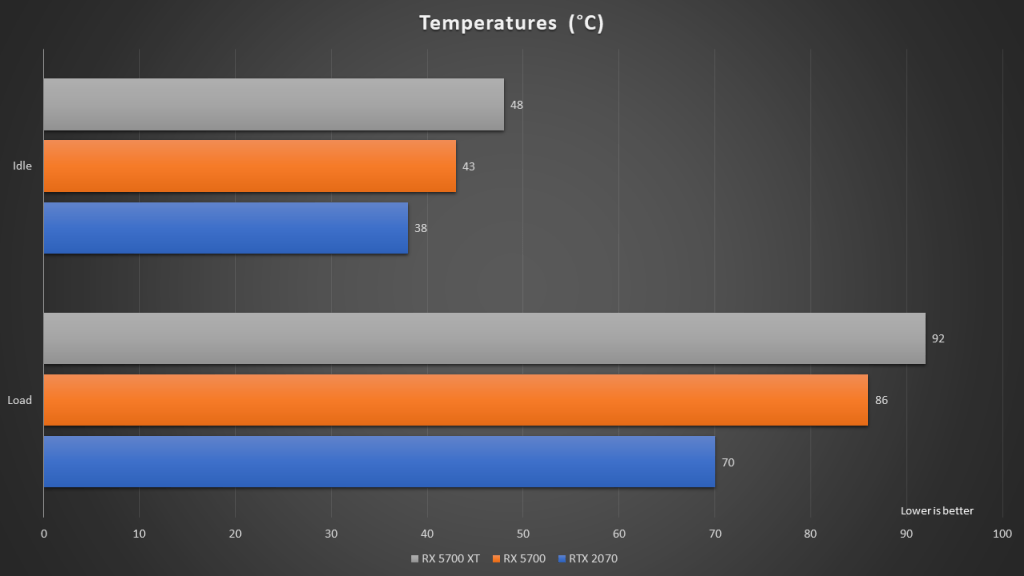
While the RTX 2070 consumes more power at idle, it had a lower core temperature. On the other hand, when the cards were stress tested, the temperatures of the Radeon RX 5700 series card rose very significantly. This could only mean two things – (1) the Radeon RX 5700 series cards are highly power inefficient or (2) the Radeon RX 5700 series cards need to have a better cooling solution.
Nonetheless, we can expect better temperatures with custom cooling designs by AIB partners soon. It could also not be a fair test to compare the Radeon RX 5700 series cards to a RTX 2070 card with a custom cooling solution. So, just take these temperature tests which a pinch of salt.
Conclusion
It is clear that AMD finally has a product that is comparable to NVIDIA’s high end graphics card offering. It should be good enough for NVIDIA to take notice of what AMD has to offer, and react to their movements in the market accordingly. However, in terms of technology, we can see that AMD is still lacking behind.
Despite having the advantage of 7nm process technology, the AMD Navi graphics card still consumes more power than than competing products. This also resulted it to run hotter than competition. Our tests have showed that these new AMD graphics cards aren’t as efficient as the competition. They consume more power to produce the same/similar results to the RTX 2070.
Regardless, the AMD Radeon RX 5700 series are still very competitively priced against its competitors. The RX 5700 XT costs S$635 and RX 5700 costs S$535 (7% GST included). As of now, all RTX 2070 graphics card on Lazada costs more than S$800. No doubt, the AMD Radeon RX 5700 series comes out to also be a very compelling buy for consumers.


